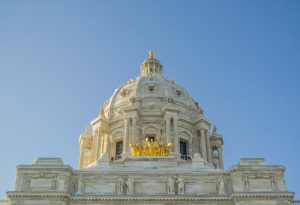Author: Jarod Bona
Congress and the federal courts have—over time—created several exemptions or immunities to antitrust liability.
The US Supreme Court in National Society of Professional Engineers v. United States explained that “The Sherman Act reflects a legislative judgment that ultimately competition will produce not only lower prices, but also better goods and services.” 435 U.S. 679, 695 (1978). And “[t]he heart of our national economy long has been faith in the value of competition.” Id.
National Society of Professional Engineers holds, effectively, that those that think that they should not be subject to competition—for whatever reason—don’t get a free pass.
But there are several situations that do create limited exemptions to federal antitrust liability. Importantly, however, the US Supreme Court has repeatedly emphasized that courts should narrowly interpret these exemptions.
Here are the primary antitrust exemptions created by Congress and the federal courts:
State-Action Immunity. State-action immunity has come up a lot at Bona law. This exemption allows certain state and local government activity to avoid antitrust scrutiny. Lately, the US Supreme Court has narrowed the doctrine, including for state licensing boards that seek its protection when sued under the antitrust laws (North Carolina State Board of Dental Examiners v. Federal Trade Commission). Bona Law also advocates a market-participant exception to state-action immunity, but the courts are split on that issue. We expect that this exemption will continue to narrow over time.
Filed-Rate Doctrine. The filed-rate doctrine is a defense to an antitrust action that is premised on the regulatory rates filed with a federal administrative agency. In many regulated industries (like insurance, energy, shipping, etc.), businesses must, generally, file the rates that they offer to customers with federal agencies. The filed-rate doctrine eliminates antitrust liability for instances in which, to satisfy the antitrust elements, a judge or judge must question or second guess the level of these filed rates (i.e. that they included overcharges resulting from anticompetitive conduct). So a business filing rates with a regulator is not, by itself, sufficient to create an exemption from antitrust liability. There are nuances.
Business of Insurance. The McCarran-Ferguson Act exempts certain acts that are the business of insurance and regulated by one or more states from antitrust scrutiny. You can read more about the McCarran-Ferguson Act and its requirements here.
Baseball. That’s right—there is a baseball exemption to antitrust liability. This is a judge-made doctrine developed long ago. The other sports don’t have an antitrust exemption and the question of whether baseball should have one comes up periodically. If you want to learn more, you should read the five-part series on baseball and antitrust that Luke Hasskamp authored.
Agricultural Cooperatives. The Capper-Volstead Act provides a limited antitrust exemption to farm cooperatives. Under certain circumstances, this Congressional Act allows farmers to pool their output together and increase their bargaining power against buyers of agricultural products. You can read more about this in Aaron Gott’s article on the Capper-Volstead Act. And you can read about production restraints here.
The Noerr-Pennington doctrine. The Noerr-Pennington immunity—named after two US Supreme Court cases—is a limited antitrust exemption for certain actions by groups or individuals when the intent of that activity is to influence government actions. The Noerr-Pennington doctrine can apply to actions that seek to influence legislative, executive, or judicial conduct. There is, however, an important sham exception to Noerr-Pennington immunity that often comes up in litigation.
You can learn more about the Noerr-Pennington doctrine and antitrust liability here.
Statutory and Non-Statutory Labor Exemptions. The statutory labor exemption allows labor unions to organize and bargain collectively in limited circumstances, including requirements that the union act in its legitimate self-interest and that it not combine with non-labor groups. The non-statutory labor exemption arrives from court decisions that further exempt certain activities that make collective bargaining possible, like joint action by employers that is ancillary to the collective bargaining process.
You can read more about both the statutory and non-statutory labor antitrust exemptions here.
Implied Immunity. Implied immunity occurs in the rare instances in which there is no express antitrust exemption, but the anticompetitive conduct falls into an area of such intense federal regulatory scrutiny that antitrust enforcement must yield to the pervasive federal regulatory scheme.
The typical area where this comes up is with the federal securities laws, which is a good example of pervasive federal regulation. The US Supreme Court case to read for this antitrust exemption is Credit Suisse Securities (USA) LLC v. Billing, from 2007.
Keep in mind that courts do not easily find implied immunity of the antitrust laws—there must be a “clear repugnancy” or “clear incompatibility” between the antitrust laws and the federal regulatory regime. A broad interpretation of this immunity could create massive antitrust loopholes because even a regulator with a heavy hand on an industry may not consider anticompetitive conduct as part of its command and control. And regulation itself creates barriers to entry in a market that is more likely to lead to less competition.
Export Trade Exemptions. A little-known exemption involves export trade by associations of competitors. This antitrust exemption arises primarily from the Webb-Pomerene Act and the Export Trading Company Act. These FTC and DOJ guidelines provide more information about this antitrust exemption.
 The Antitrust Attorney Blog
The Antitrust Attorney Blog












